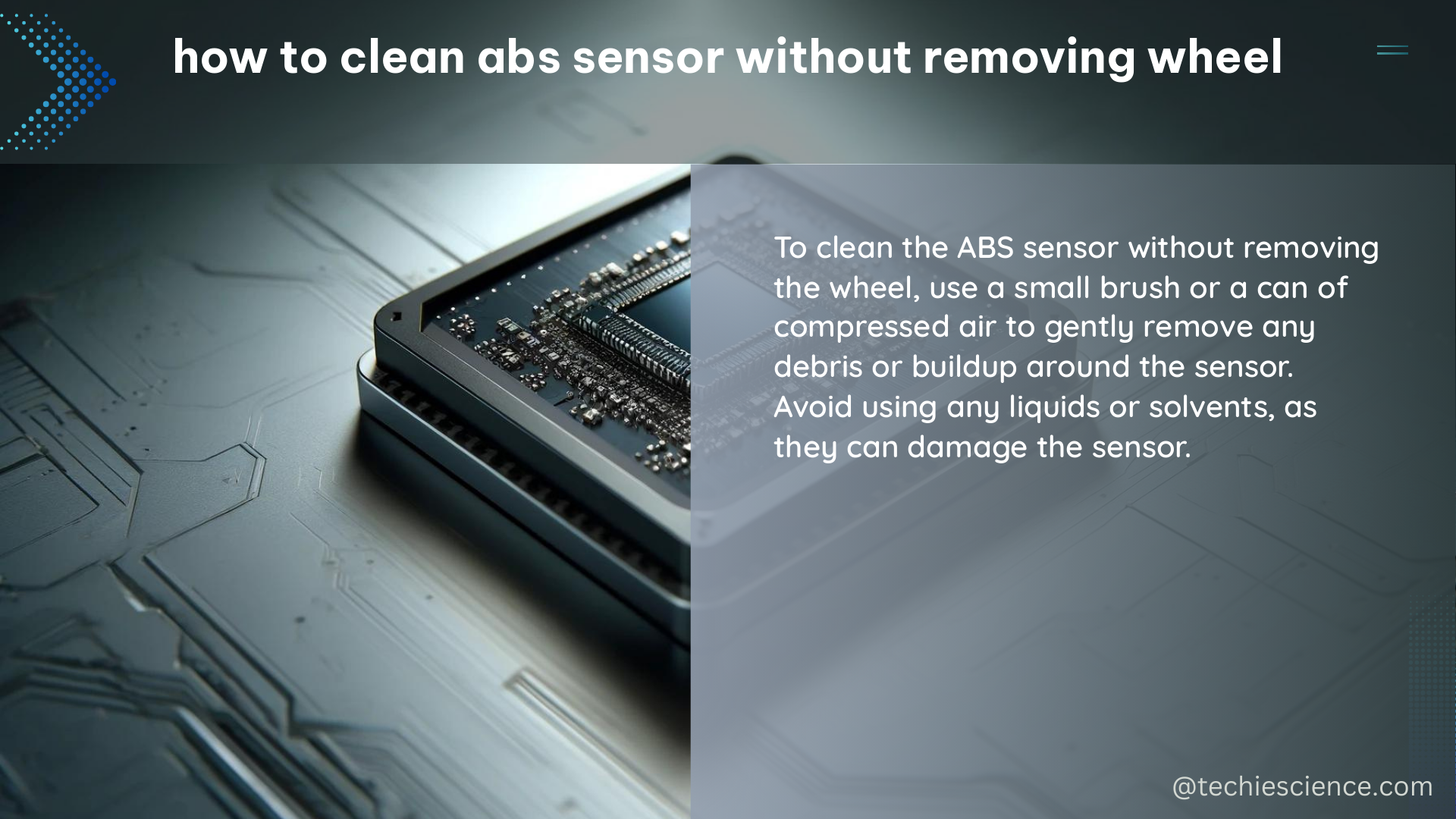Cleaning an ABS (Anti-lock Braking System) sensor without removing the wheel is a delicate task that requires precision and care to ensure the sensor’s proper functioning. This comprehensive guide will walk you through the step-by-step process, providing technical specifications and DIY tips to help you clean your ABS sensor effectively while minimizing the risk of damage.
Locating the ABS Sensor
The ABS sensor is typically located near the wheel hub or brake rotor, and it may be mounted on the suspension or axle, depending on the vehicle make and model. It’s essential to identify the exact location of the sensor before proceeding with the cleaning process.
Gathering Cleaning Supplies

To clean the ABS sensor without removing the wheel, you’ll need the following supplies:
- Clean, lint-free cloth
- Rubbing alcohol or electronic cleaner
- Soft-bristled brush
Avoid using any abrasive materials or harsh chemicals, as they can damage the sensitive components of the sensor.
Inspecting the Sensor
Before cleaning the ABS sensor, carefully inspect it for any visible signs of damage, such as cracks or corrosion. If you notice any damage, it’s best to replace the sensor rather than attempting to clean it, as this could further compromise its functionality.
Cleaning the Sensor
- Use the soft-bristled brush to gently remove any debris or dirt from the surface of the ABS sensor.
- Dampen the clean, lint-free cloth with rubbing alcohol or electronic cleaner.
- Carefully wipe the sensor with the dampened cloth, taking care to avoid getting any liquid inside the sensor or on the connector.
Drying the Sensor
After cleaning, use a dry, lint-free cloth to gently dry the sensor. Ensure that the sensor is completely dry before reconnecting it to the vehicle.
Testing the Sensor
Once the sensor is clean and dry, reconnect it and test it to ensure it is working properly. If the ABS light is still on, there may be another issue with the system that needs to be addressed.
Technical Specifications
ABS sensors are designed to operate within specific parameters to ensure reliable performance. Here are some key technical specifications to keep in mind:
- Temperature Range: Typically between -40°C and 125°C
- Resistance Range: Typically between 500 and 10,000 ohms
- Operating Voltage: Typically between 5 and 12 volts
- Frequency Range: Typically between 1 and 10 kHz
DIY Tips
- Always disconnect the battery before cleaning the ABS sensor to avoid any accidental electrical damage.
- Use a multimeter to test the sensor’s resistance and voltage before and after cleaning to ensure it is still within the recommended specifications.
- If you are not comfortable cleaning the sensor yourself, consider taking your vehicle to a professional mechanic or dealership.
Conclusion
Cleaning an ABS sensor without removing the wheel requires a delicate touch and attention to detail. By following the steps outlined in this comprehensive guide, you can effectively clean your ABS sensor while minimizing the risk of damage. Remember to always prioritize safety and consider seeking professional assistance if you’re unsure about any part of the process.
References
- HELLA: Check and change ABS sensor – https://www.hella.com/techworld/us/Technical/Sensors-and-actuators/Check-change-ABS-sensor-4074/
- DoD 2022.4 SBIR Annual BAA: Propose the targeted level of improvement in just the AI/ML interpretation/clarification of the seismograph data – https://www.sbir.gov/node/2120611
- ResearchGate: Sensing and Sensor Fundamentals – https://www.researchgate.net/publication/301166370_Sensing_and_Sensor_Fundamentals

The lambdageeks.com Core SME Team is a group of experienced subject matter experts from diverse scientific and technical fields including Physics, Chemistry, Technology,Electronics & Electrical Engineering, Automotive, Mechanical Engineering. Our team collaborates to create high-quality, well-researched articles on a wide range of science and technology topics for the lambdageeks.com website.
All Our Senior SME are having more than 7 Years of experience in the respective fields . They are either Working Industry Professionals or assocaited With different Universities. Refer Our Authors Page to get to know About our Core SMEs.